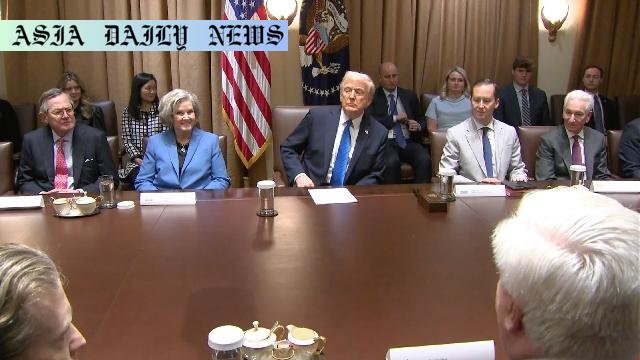Federal Layoffs: A wave of terminations hit US health agencies, alarming many during a critical measles outbreak in 19 states.
The US government has begun massive layoffs of health workers, affecting HHS, CDC, and FDA.
The layoffs occur amid a measles outbreak, with 480 cases reported in 19 states.
Key health officials overseeing infectious diseases and drug reviews have been dismissed.
Concerns grow about the nation’s ability to manage public health emergencies effectively.
The restructuring is part of an initiative by Secretary Robert F. Kennedy Jr. to realign the HHS mission.

The Start of Federal Layoffs and Their Magnitude
The United States government has recently initiated a significant wave of layoffs within its health agencies, leading to widespread concern. Affected organizations include the Department of Health and Human Services (HHS), the Centers for Disease Control and Prevention (CDC), and the Food and Drug Administration (FDA). These layoffs, reportedly impacting nearly 20,000 workers—about 25% of the HHS workforce—stem from an effort by the Trump administration to restructure federal health bodies. This decision, however, coincides with a troubling outbreak of measles in the United States, which has already seen over 480 infections in 19 states, predominantly in Texas. The timing of these dismissals has triggered alarm over the nation’s capacity to effectively respond to public health emergencies.
The Impact of Layoffs on Public Health Agencies
According to reports, critical staff members responsible for infectious disease prevention, drug reviews, and even tobacco regulation are among those dismissed. Among the employees affected are senior officials whose roles were central to managing disease outbreaks and ensuring public health safety. The suddenness of these layoffs has compounded their impact. Many employees only discovered their termination after receiving early-morning emails, with some showing up to work unaware that they no longer had jobs. This disruption not only harms individual livelihoods but raises questions about the agencies’ preparedness to deal with health crises, such as disease outbreaks or drug safety reviews. Experts warn that the downsizing could have a severe impact on America’s collective efforts to manage or prevent public health emergencies.
Concerns Around Timing and Consequences
The layoffs come at a pivotal time when public health agencies are grappling with a measles outbreak that is among the worst in recent memory. Public health advocates worry that such staffing reductions will worsen an already challenging situation, creating gaps in disease detection, response coordination, and prevention strategies. The significant cuts undermine the CDC and FDA’s capacity to provide critical healthcare services and oversight. The far-reaching implications of these layoffs extend beyond measles, potentially affecting responses to other infectious diseases, chronic illnesses, and the regulation of pharmaceuticals. The mass terminations not only highlight potential vulnerabilities in the nation’s health infrastructure but also place strain on remaining employees working to pick up the slack.
Official Justifications and Public Concerns
Robert F. Kennedy Jr., Secretary of the HHS, defended the decision to enact the layoffs. In a social media post, he stated that the move was part of an effort to realign the department’s core mission, emphasizing the theme “Make America Healthy Again.” According to Kennedy, the focus moving forward would be on combating chronic diseases rather than maintaining the current structure of the workforce. However, critics argue that these layoffs are ill-timed and poorly planned, especially given the measles outbreak. They note that chronic disease prevention efforts must not come at the expense of managing acute, contagious outbreaks. Balancing these priorities is critical to ensuring a robust and equitable public health system. Meanwhile, public confidence in the government’s ability to safeguard national health hangs in the balance.
Long-term Implications for Public Health and Workforce
The long-term effects of these layoffs could ripple across the public health landscape, creating vulnerabilities in areas beyond infectious disease management. Reduced staffing may lead to slower responses to public health emergencies, regulatory bottlenecks in drug approvals, and gaps in chronic disease prevention programs. Ongoing adjustments and reorganization within federal health agencies may further destabilize the public’s trust in these institutions. Stakeholders are calling for greater transparency and a reevaluation of the decision, emphasizing the importance of maintaining a well-funded and adequately staffed public health infrastructure to address the needs of all citizens, particularly in times of crisis.
Commentary
Concerns About Public Health Risks
The recent wave of federal layoffs in public health agencies raises serious questions about the U.S. government’s readiness to handle current and future health emergencies. With over 480 measles cases already confirmed across 19 states, it is alarming to witness significant cuts within agencies responsible for safeguarding public health. Many of the dismissed employees held essential roles in areas like infectious disease prevention and drug regulation. Their absence may leave critical gaps that jeopardize the nation’s ability to address ongoing and emerging health crises effectively.
Timing and Policy Criticism
While restructuring federal agencies can sometimes improve efficiency or focus, timing is everything. Implementing layoffs during an active measles outbreak seems counterproductive, regardless of the administration’s long-term goals. Public health requires a robust, well-staffed workforce to prevent the spread of diseases, coordinate responses, and monitor drug safety. Without sufficient personnel, public health agencies may struggle to fulfill these essential responsibilities, leaving the general population at risk. This move, no matter its official justification, appears to prioritize bureaucratic restructuring at the expense of immediate public safety.
The Need for Strategic Planning
Looking ahead, strategic planning and transparent communication are critical to avoid further undermining public health initiatives. Policymakers must ensure that any workforce restructuring aligns with the current demands of public health infrastructure in a way that minimizes disruption. While long-term goals like combating chronic illnesses are commendable, they must not come at the cost of addressing immediate threats, such as infectious disease outbreaks. Thoughtful decision-making and a balanced approach are essential to protect public health and maintain public trust in federal agencies.


